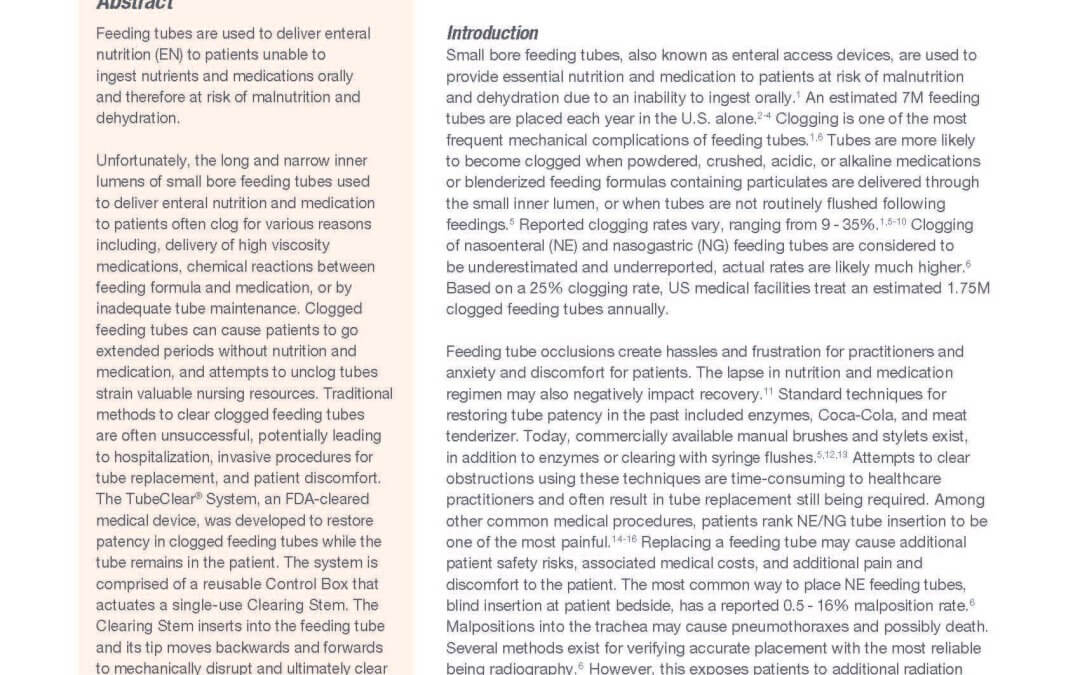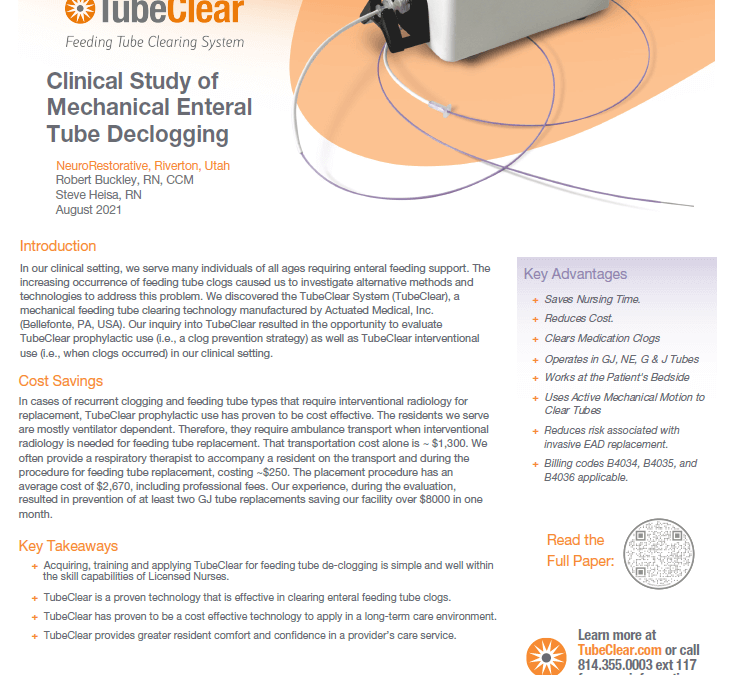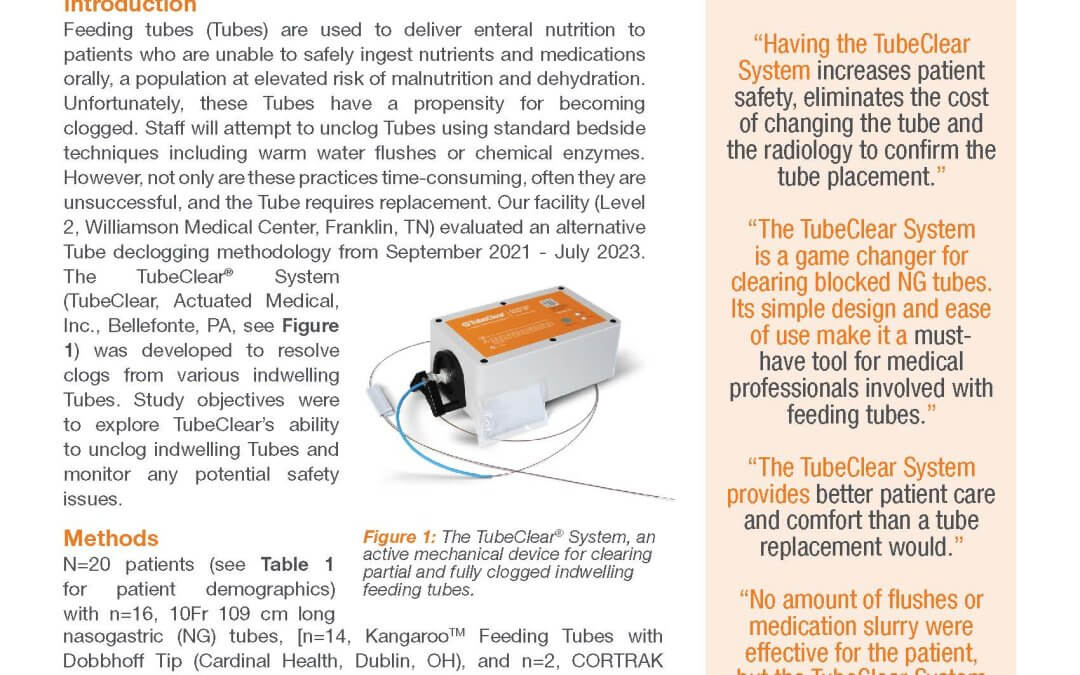
Mar 15, 2024 | Studies & Evaluations
Marcia Belcher, MSN, BBA, RN, CCRN-CSC, CCNS Small bore feeding tubes, also known as enteral access devices, are used to provide essential nutrition and medication to patients at risk of malnutrition and dehydration due to an inability to ingest orally. An estimated...

Mar 15, 2024 | Studies & Evaluations
Robert Buckley, RN, CCM & Steve Heisa, RN NeuroRestorative, Riverton, Utah, August 2021 Key Takeaways Acquiring, training and applying TubeClear for feeding tube de-clogging is simple and well withinthe skill capabilities of Licensed Nurses. TubeClear is a proven...

Mar 15, 2024 | Studies & Evaluations
Jesse C. James, CNSC, Williamson Medical Center, Franklin, TN 37067 Feeding tubes (Tubes) are used to deliver enteral nutrition to patients who are unable to safely ingest nutrients and medications orally, a population at elevated risk of malnutrition and dehydration....
Dec 1, 2015 | Studies & Evaluations
Feeding tubes are used to deliver enteral nutrition to patients that are unable to ingest nutrients and medications orally and therefore are at risk of malnutrition and dehydration (1). Unfortunately, the long and narrow inner lumens of small bore feeding tubes used...



